Artist: Diana Deutsch

Book:
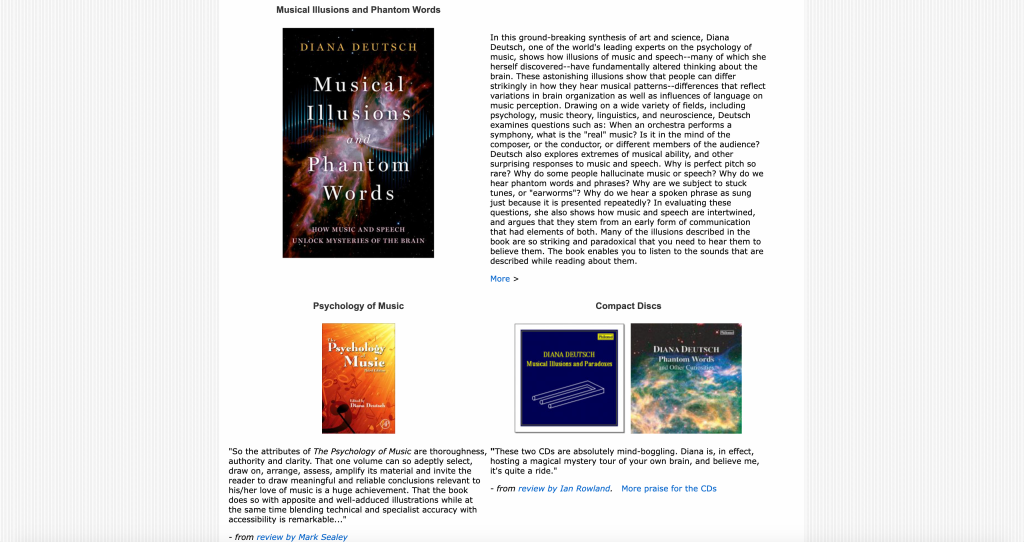
Experiment:
- The Octave Illusion
The octave illusion is an auditory illusion discovered by Diana Deutsch in 1973. It is produced when two tones that are an octave apart are repeatedly played in alternation (“high-low-high-low”) through stereo headphones. The same sequence is played to both ears simultaneously; however when the right ear receives the high tone, the left ear receives the low tone, and conversely. Instead of hearing two alternating pitches, most subjects instead hear a single tone that alternates between ears while at the same time its pitch alternates between high and low.
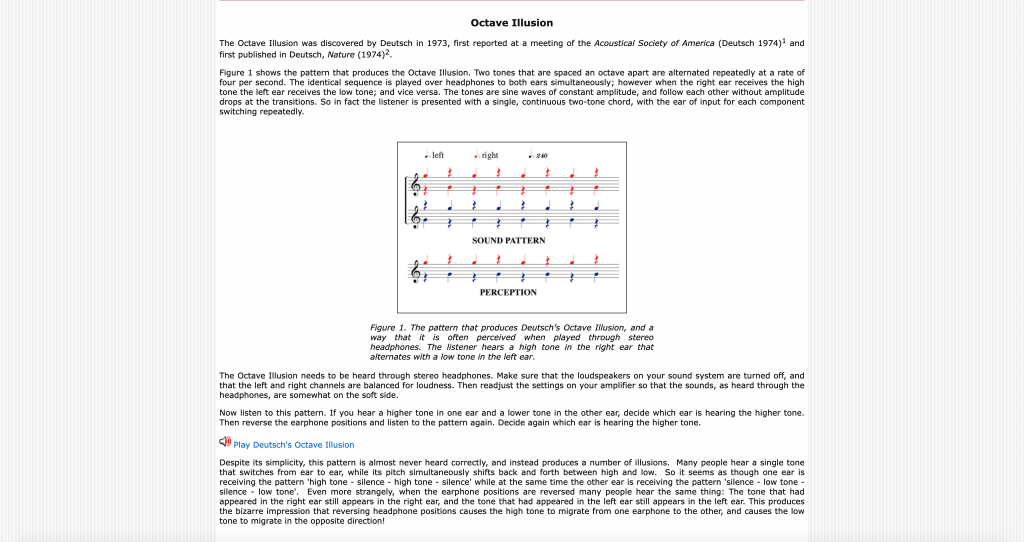
http://deutsch.ucsd.edu/psychology/pages.php?i=202
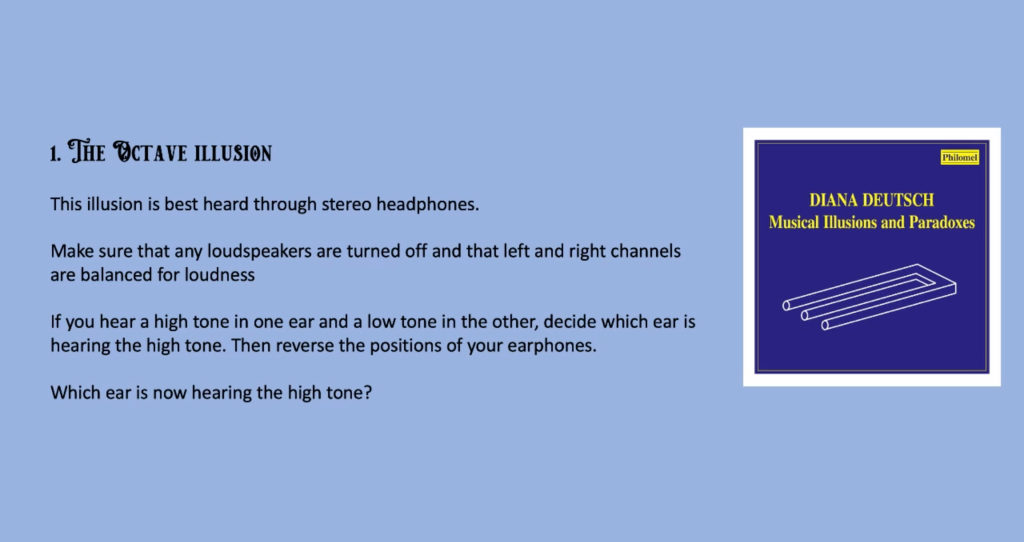
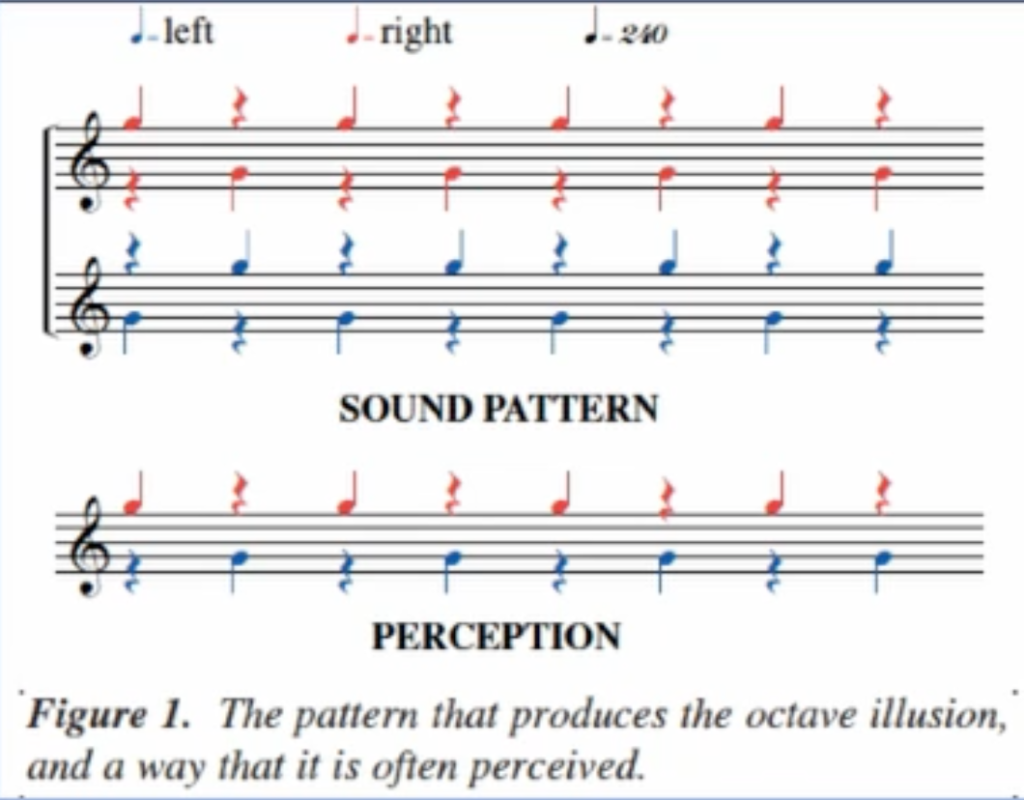
Try to experiment:

Further experiments
In a further experiment, Deutsch examined the effect of handedness and familial handedness background on perception of the octave illusion. The subjects were 250 students, who were classified both according to their handedness and also according to whether they had a left-handed parent or sibling. It was found that right-handers were more likely to hear the high tone on the right (and the low tone on the left) than were mixed-handers, and mixed-handers were more likely to do so than left-handers. And for all three handedness groups the tendency to hear the high tone on the right was greater for subjects with only right-handed parents and siblings than for those with left- or mixed-handed parents or siblings.
In another experiment, Deutsch and Roll explored the two-channel model in further detail. They played 44 right-handed subjects a repeating pattern of tones pitched at 400 Hz and 800 Hz. This time the right ear was given three 800 Hz pitches alternating with two 400 Hz pitches, while the left ear simultaneously heard three 400 Hz pitches alternating with two 800 Hz pitches. A 250 ms pause was added between each successive tone combination. Subjects were asked to report how many high tones and how many low tones they heard, and in which ears they heard the tones. The results were consistent with the initial experiment.
In further experiments based on the same model Deutsch asked subjects to report whether the pattern was of the “high-low-high-low” type or the “low-high-low-high” type. From this it could be determined which ear the subject was following for pitch. The amplitude of the unheard pitch was then manipulated in order to determine how large it needed to be, in order to counteract the effect, and it was found that a significant amplitude disparity was sometimes needed. It was also determined that, when both tones were not present at the same time, the illusion was broken.
In yet other experiments, Deutsch varied the relative amplitudes of the high and low tones and asked subjects whether the pattern was of the “right-left-right-left-” type or the “left-right-left-right” type. From this, it could be determined whether the subject was localizing the tone to the high or low pitch. Again, it was found that a large amplitude disparity was sometimes needed to counteract the effect.
—From Octave illusion Wikipedia
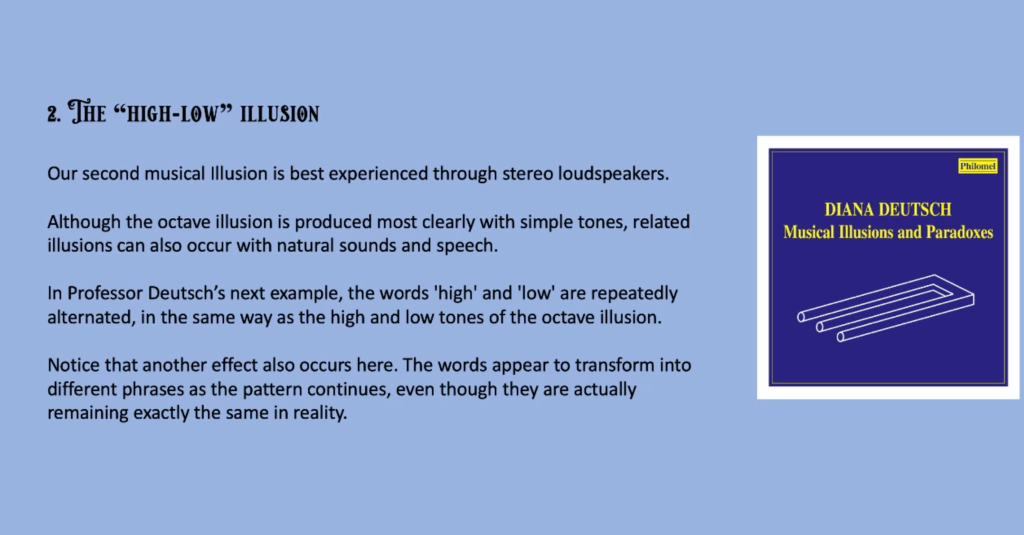
Reflections:
Does this sound illusion vary from person to person?
Does this sound illusion have anything to do with timbre?
Does this sound illusion have anything to do with the length of the sound and the effect of the sound?
What reference improvement can this sound illusion bring to the mixing work?
